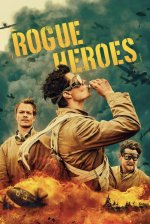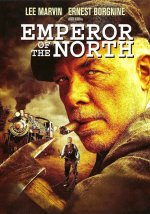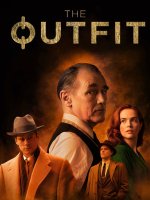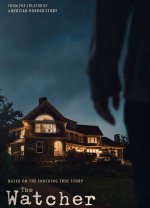What are You Watching? Year 2022
- Thread starter sablebrush52
- Start date
You are using an out of date browser. It may not display this or other websites correctly.
You should upgrade or use an alternative browser.
You should upgrade or use an alternative browser.
SmokingPipes.com Updates
Watch for Updates Twice a Week
- Status
- Not open for further replies.
I'm watching the "Small Murders of Agatha Christie" on Prime. It is in French with English subtitles. Thay have taken murder mysteries of Agatha Christie and redone them in French substituting a French Police Superintendent and a French Inspector for Poirot/Marple/Whoever. The stories are all set in France in the 1930's. They are quite good particularly the French Superintendent.
4/5
4/5
I remember you telling me about painting clouds and hills in the homemade shack. Great story.I worked on Lonesome Dove. What's your rating?
I’ve seen Lonesome Dove 3 times. Such a good story line and the acting is top notch.
I just finished episode three of Rogue Heroes. Extremely well done and very close to the book so far.
It’s about how the British SAS came about during WW2.
I know this because I had zero clue they were making the book into a TV show and had finish listening to the book two days before surfing Amazon Prime and seeing it advertised. Had to subscribe to yet one more service but so far it’s been well worth it.

It’s about how the British SAS came about during WW2.
I know this because I had zero clue they were making the book into a TV show and had finish listening to the book two days before surfing Amazon Prime and seeing it advertised. Had to subscribe to yet one more service but so far it’s been well worth it.

I can’t unsee her from Harry Potter.Same here. I think I'm of the age where familiarity with the story line is greater than in the past seasons.
We don't care as much for the actor portraying QE this season. I think she carries over into the next season (and last).
Would love to hear more!I worked on Lonesome Dove. What's your rating?
The short answer is that I was engaged to paint a matte painting of a winter version of the location that had been selected to double for the Montana cattle ranch.Would love to hear more!
Here's the longer answer.
It was summer, and the production needed an FX shot to depict the change of seasons. The production wanted to be able to do a cross dissolve between the real summer vista and the winter version I would create.
The location was on a cattle ranch in the mountains above Taos, New Mexico, a wide valley flanked with fir covered slopes and Taos mountain in the distance. I sited the shot on a rise overlooking the valley that framed the slopes nicely with the mountain in the distance. A log cabin was under construction when I arrived.
To control exposure on the painting we built a hut made of 2X4s over which was stretched a skin of visquine to block out the sunlight. We would bring in two 10,000 watt lamps to provide lighting for the painting when we shot it. At one end we left an opening behind the glass on which I would create the matte painting that revealed the view. Opposite there was a flap which could be sealed. Otherwise, where were no other openings.
We erected a wooden easel to hold the glass at the correct distance from the lens, one that would allow me to carry focus from the glass to infinity at an F stop that would work for action, and I staked the tripod in the exact position where I'd sited the shot.
Painting a live on location glass shot is the oldest technique in matte painting, one that has largely gone out of use, and I was one of the very few people of my generation who could do it successfully.
Everything has go go right. Weather has to cooperate, I had to be exact in painting every detail of the landscape or things would appear to "jump around" during the cross dissolve.
Nothing went right.
A huge system of storms collided over northern New Mexico, rain, lightning, winds, fogs and mists, snow, the light changing every nanosecond. In addition, Simon Wincer fell in love with the lens I had chosen for the matte shot the shot without which I couldn't draw the line up on the glass. Production assistants would repeatedly show up in the middle of my work to demand that lens for a shot he was doing, or a thick fog would roll in, hiding the valley. I couldn't make any progress.
After a few days of this nonsense I informed the production company that I would not be able to do the shot under these conditions and regretfully that I would have to withdraw. That apparently got their attention and the lens stayed with me from then on.
I was days behind but determined to get the shot done despite hell and/or high water. I was working day and night to catch up, and one night, during a particularly violent wind storm, a blast of air came through the flap, picked me up off the ground and then slammed me face down into it. I could see my painting lights toppling toward the glass and managed to tackle it before there was a collision. In the darkness I could hear my equipment flying around,
Then it suddenly went still. The only sound was from the generator powering the painting lights. My face was wet and I thought that maybe I was bleeding, but when I tasted the wetness I realized that it was water.
I looked up at where the roof had been and could see stars. The roof had been completely blown off.
It was snowing though the top of what remained of the shelter.
My equipment was blown everywhere. Miraculously the painting was unscathed. I threw a plastic sheet over the glass to protect the painting, released the camera from the tripod, and hiked out of there back to the road, in total darkness.
9,000 foot altitude, carrying a motion picture camera thru Texas gumbo where you sank almost to your knees with every step, 3/4 of a mile to my car. I would have made a nice dinner for any of the predators in those woods. Sound like the glamour of Hollywood?
The next morning a crew rebuilt the hut and I went back to work.
The fates weren't done screwing with me.
The painting was completed, though final adjustments would be needed to adjust balances right before taking the shot, under the interior lighting. It had been painted to match the scheduled shot time of 5 PM.
The thing with a live on location glass shot is that it has be painted to a very specific lighting, color temperatures and contrasts change, and you have about plus or minus 20 minutes when the painting will match into the lighting of the time of day for which it has been painted. More than that and "things" shift.
I got back to the lodge where we were staying, saw my Production Designer, and told him we would be ready to go at 5 PM the following day as scheduled.
That's when he said, "Didn't anyone tell you?"
"Tell me what?" I replied with a sinking feeling.
"They rescheduled the shot", he said, looking very pissed that I had not been informed.
"Rescheduled it to when?" I blandly replied.
"8 AM, first shot of the day." he said.
"Which means that nothing I painted will work, the color temperatures will be different, the angle of light will be nearly the opposite of the time of day for which it was painted."
He was fit to be tied.
I said, "Look, get me the gas I need to keep the generator going and I'll go back out there and revise it. I know what 8 o'clock AM looks like in that valley, but I'll need the night to repaint it."
I went back out and set to work. I was given a sleeping bag to use for insulation if I started to get cold. Somewhere, in the dead of night, a gas station was broken into so that gas could be obtained that was carried out to my little hut. A note of apology was left along with a wad of cash.
I worked through the night. It was so cold that the vapor from my breath froze on the visquine surface over my head. The acrylic paint didn't dry quickly in the cold and damp, so I could work it like oil paint. Then I would lean in the 9 lights to dry it. The crew started to foll in at 5:30 and I was still repainting. At 7:30 the lights were set up in the tent while I was looking through the lens and going back and forth between the camera and the painting, to retouch values and adjust temperatures, I adjusted lighting and the whole dropped into place. I called action and we got the shot.
After that we took down the painting and got the shot of the "summer" version of the scene. I walked back to the Production Designer's car, opened the rear door, and passed out on the back seat. Someone kindly lifted my legs into the car and closed the door.
That's my contribution to Lonesome Dove.
I’ve read the book and have seen the original miniseries - that’s definitely a shorter story, and better! Thanks for taking the time to share it!The short answer is that I was engaged to paint a matte painting of a winter version of the location that had been selected to double for the Montana cattle ranch.
Here's the longer answer.
It was summer, and the production needed an FX shot to depict the change of seasons. The production wanted to be able to do a cross dissolve between the real summer vista and the winter version I would create.
The location was on a cattle ranch in the mountains above Taos, New Mexico, a wide valley flanked with fir covered slopes and Taos mountain in the distance. I sited the shot on a rise overlooking the valley that framed the slopes nicely with the mountain in the distance. A log cabin was under construction when I arrived.
To control exposure on the painting we built a hut made of 2X4s over which was stretched a skin of visquine to block out the sunlight. We would bring in two 10,000 watt lamps to provide lighting for the painting when we shot it. At one end we left an opening behind the glass on which I would create the matte painting that revealed the view. Opposite there was a flap which could be sealed. Otherwise, where were no other openings.
We erected a wooden easel to hold the glass at the correct distance from the lens, one that would allow me to carry focus from the glass to infinity at an F stop that would work for action, and I staked the tripod in the exact position where I'd sited the shot.
Painting a live on location glass shot is the oldest technique in matte painting, one that has largely gone out of use, and I was one of the very few people of my generation who could do it successfully.
Everything has go go right. Weather has to cooperate, I had to be exact in painting every detail of the landscape or things would appear to "jump around" during the cross dissolve.
Nothing went right.
A huge system of storms collided over northern New Mexico, rain, lightning, winds, fogs and mists, snow, the light changing every nanosecond. In addition, Simon Wincer fell in love with the lens I had chosen for the matte shot the shot without which I couldn't draw the line up on the glass. Production assistants would repeatedly show up in the middle of my work to demand that lens for a shot he was doing, or a thick fog would roll in, hiding the valley. I couldn't make any progress.
After a few days of this nonsense I informed the production company that I would not be able to do the shot under these conditions and regretfully that I would have to withdraw. That apparently got their attention and the lens stayed with me from then on.
I was days behind but determined to get the shot done despite hell and/or high water. I was working day and night to catch up, and one night, during a particularly violent wind storm, a blast of air came through the flap, picked me up off the ground and then slammed me face down into it. I could see my painting lights toppling toward the glass and managed to tackle it before there was a collision. In the darkness I could hear my equipment flying around,
Then it suddenly went still. The only sound was from the generator powering the painting lights. My face was wet and I thought that maybe I was bleeding, but when I tasted the wetness I realized that it was water.
I looked up at where the roof had been and could see stars. The roof had been completely blown off.
It was snowing though the top of what remained of the shelter.
My equipment was blown everywhere. Miraculously the painting was unscathed. I threw a plastic sheet over the glass to protect the painting, released the camera from the tripod, and hiked out of there back to the road, in total darkness.
9,000 foot altitude, carrying a motion picture camera thru Texas gumbo where you sank almost to your knees with every step, 3/4 of a mile to my car. I would have made a nice dinner for any of the predators in those woods. Sound like the glamour of Hollywood?
The next morning a crew rebuilt the hut and I went back to work.
The fates weren't done screwing with me.
The painting was completed, though final adjustments would be needed to adjust balances right before taking the shot, under the interior lighting. It had been painted to match the scheduled shot time of 5 PM.
The thing with a live on location glass shot is that it has be painted to a very specific lighting, color temperatures and contrasts change, and you have about plus or minus 20 minutes when the painting will match into the lighting of the time of day for which it has been painted. More than that and "things" shift.
I got back to the lodge where we were staying, saw my Production Designer, and told him we would be ready to go at 5 PM the following day as scheduled.
That's when he said, "Didn't anyone tell you?"
"Tell me what?" I replied with a sinking feeling.
"They rescheduled the shot", he said, looking very pissed that I had not been informed.
"Rescheduled it to when?" I blandly replied.
"8 AM, first shot of the day." he said.
"Which means that nothing I painted will work, the color temperatures will be different, the angle of light will be nearly the opposite of the time of day for which it was painted."
He was fit to be tied.
I said, "Look, get me the gas I need to keep the generator going and I'll go back out there and revise it. I know what 8 o'clock AM looks like in that valley, but I'll need the night to repaint it."
I went back out and set to work. I was given a sleeping bag to use for insulation if I started to get cold. Somewhere, in the dead of night, a gas station was broken into so that gas could be obtained that was carried out to my little hut. A note of apology was left along with a wad of cash.
I worked through the night. It was so cold that the vapor from my breath froze on the visquine surface over my head. The acrylic paint didn't dry quickly in the cold and damp, so I could work it like oil paint. Then I would lean in the 9 lights to dry it. The crew started to foll in at 5:30 and I was still repainting. At 7:30 the lights were set up in the tent while I was looking through the lens and going back and forth between the camera and the painting, to retouch values and adjust temperatures, I adjusted lighting and the whole dropped into place. I called action and we got the shot.
After that we took down the painting and got the shot of the "summer" version of the scene. I walked back to the Production Designer's car, opened the rear door, and passed out on the back seat. Someone kindly lifted my legs into the car and closed the door.
That's my contribution to Lonesome Dove.
All Quiet On The Western Front. WW1 movie based from the German side leading up to their surrender. The music was kinda shit but overall very good movie 5/5
Emperor of the North, 1973, starring Lee Marvin, Ernest Borgnine and Keith Carradine. I rate it 4/5. I really enjoyed it, I'm a big fan of Lee Marvin movies.
A legendary hobo, A No.1 (Lee Marvin) is renowned for his expertise in riding the rails for free, but he meets his match with Shack (Ernest Borgnine), a fierce railroad conductor who mercilessly kicks stowaways off of his train. Joined by brash young hobo Cigaret (Keith Carradine), A No.1 manages to elude Shack but issues a challenge to the heavily armed conductor, announcing that he will ride the train for its entire route, leading to a violent showdown between the two strong-willed men.

A legendary hobo, A No.1 (Lee Marvin) is renowned for his expertise in riding the rails for free, but he meets his match with Shack (Ernest Borgnine), a fierce railroad conductor who mercilessly kicks stowaways off of his train. Joined by brash young hobo Cigaret (Keith Carradine), A No.1 manages to elude Shack but issues a challenge to the heavily armed conductor, announcing that he will ride the train for its entire route, leading to a violent showdown between the two strong-willed men.

Just watched Love, Charlie last night. An incredible powerful new documentary about Chef Charlie Trotter. If you don’t know who he is, it’s incredible fascinating to watch. If you do know, then you likely know his reputation as a tyrant. But, as with anything, there are A LOT of shades a grey. I’m very familiar with his influence on American dining and still learned a lot about him. Obsessive tyrant or driven genius? Up to you to decide.
 oakstreet.pictures
oakstreet.pictures
Love, Charlie - Oak Street Pictures
Watched the Game of Thrones prequel, very good. Started watching the Lord of the Rings...whatever it is, got bored. Started watching 1899, got bored. Started watching Wednesday, we like it but for some reason it's the most sleep-inducing series ever. Watching it after gym day is a surefire way to sleep in 10 mins flat.
Oh yes, and the Crown new season. Diana was spot on, though I did and still do dislike her. Al-Fayed was very well done, Charles is too handsome/manly, QE and Philip are very well done. Margaret very interesting and complex as usual. My wife liked this season a lot, me less so.
Oh yes, and the Crown new season. Diana was spot on, though I did and still do dislike her. Al-Fayed was very well done, Charles is too handsome/manly, QE and Philip are very well done. Margaret very interesting and complex as usual. My wife liked this season a lot, me less so.
Just watched this last night on Prime. Good movie great ending. The Outfit (2022) - IMDb - https://www.imdb.com/title/tt14114802/
I watched The Outfit this afternoon. I rate 3.5/5.Just watched this last night on Prime. Good movie great ending. The Outfit (2022) - IMDb - https://www.imdb.com/title/tt14114802/
I agree with you, the ending was great.
The Outfit, a gripping and masterful thriller in which an expert tailor (Academy Award winner Mark Rylance) must outwit a dangerous group of mobsters in order to survive a fateful night.

We watched it recently (and enjoyed it). With the single setting, I could easily see this being done as a play on a stage.I watched The Outfit this afternoon. I rate 3.5/5.
I agree with you, the ending was great.
The Outfit, a gripping and masterful thriller in which an expert tailor (Academy Award winner Mark Rylance) must outwit a dangerous group of mobsters in order to survive a fateful night.
View attachment 184304
I saw the preview for this todayAnyone else looking forward to "Cocaine Bear"? Anyone?
"Apex predator, high on cocaine, out of its mind.”
- Status
- Not open for further replies.





